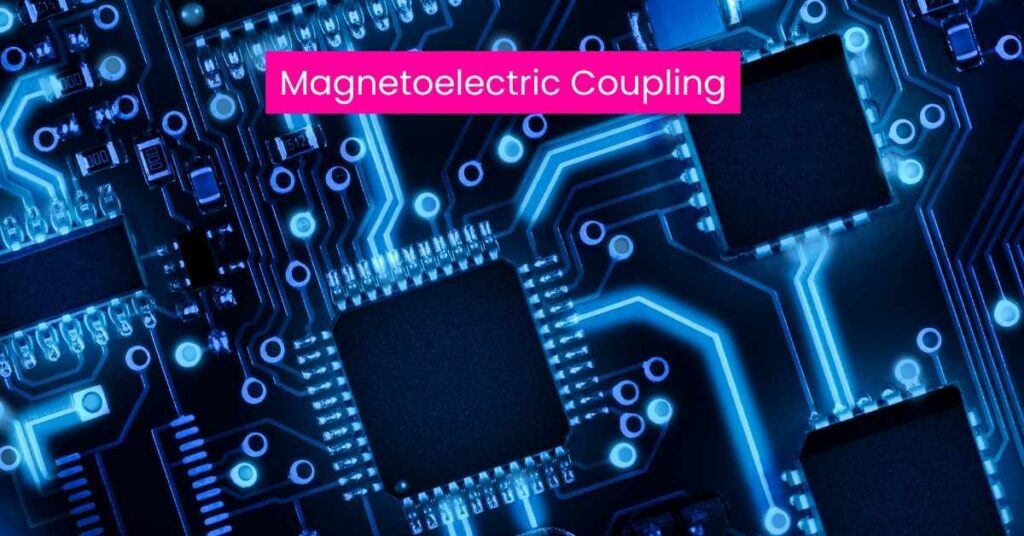Introduction
Imagine a world where your electronic devices are not only faster and more efficient but also consume significantly less power. This isn’t a distant dream but a tangible reality that magnetoelectric spintronics promises to bring. As we stand on the brink of a technological revolution, understanding how magnetoelectric spintronics can change modern electronics is crucial. This article delves into the intricacies of this cutting-edge technology, exploring its potential to redefine the future of electronics.
Table of Contents
What is Magnetoelectric Spintronics?
The Basics of Spintronics
Spintronics, or spin electronics, is a branch of technology that exploits the intrinsic spin of electrons, along with their fundamental electronic charge, in solid-state devices. Unlike traditional electronics, which rely solely on the charge of electrons to process information, spintronics utilizes the electron’s spin state, which can be thought of as a tiny magnetic moment.
Magnetoelectric Coupling

Magnetoelectric spintronics takes this concept a step further by incorporating magnetoelectric coupling. This phenomenon refers to the interaction between magnetic and electric properties in a material. In simpler terms, it allows the control of magnetic properties using an electric field and vice versa. This dual control mechanism opens up new possibilities for creating more efficient and versatile electronic devices.
The Science Behind Magnetoelectric Spintronics
Materials and Mechanisms
At the heart of magnetoelectric spintronics are materials that exhibit strong magnetoelectric coupling. These materials include multiferroics, which possess both ferromagnetic and ferroelectric properties. The interaction between these properties enables the control of magnetic states through electric fields, reducing the need for magnetic fields, which are typically more cumbersome and energy-intensive.
Device Architecture
In a typical magnetoelectric spintronic device, layers of ferromagnetic and ferroelectric materials are stacked together. The electric field applied to the ferroelectric layer induces a change in its polarization, which in turn influences the magnetic state of the adjacent ferromagnetic layer. This interaction forms the basis for data storage, logic operations, and other electronic functionalities.
Benefits of Magnetoelectric Spintronics
Energy Efficiency
One of the most significant advantages of magnetoelectric spintronics is its potential for energy efficiency. Traditional electronic devices rely on electric currents to manipulate magnetic states, which can be power-hungry. By using electric fields instead, magnetoelectric spintronics can achieve the same results with much lower energy consumption.
Increased Speed and Performance
The ability to control magnetic states rapidly and efficiently translates to faster data processing and retrieval. This can lead to significant performance improvements in various applications, from consumer electronics to high-performance computing systems.
Miniaturization
As electronic devices continue to shrink in size, the need for more compact and efficient components becomes paramount. Magnetoelectric spintronics offers a pathway to miniaturization without compromising performance, enabling the development of smaller, more powerful devices.
Practical Applications of Magnetoelectric Spintronics
Data Storage
One of the most promising applications of magnetoelectric spintronics is in data storage. Traditional magnetic storage devices, such as hard drives, rely on magnetic fields to write and read data. Magnetoelectric spintronic devices, on the other hand, can achieve the same functionality using electric fields, leading to faster, more efficient, and more reliable storage solutions.
Logic Devices
Magnetoelectric spintronics can also revolutionize logic devices, which form the backbone of modern computing. By enabling faster and more energy-efficient logic operations, this technology can pave the way for next-generation processors and computing architectures.
Sensors and Actuators
The unique properties of magnetoelectric materials make them ideal for use in sensors and actuators. These devices can benefit from the high sensitivity and low power consumption of magnetoelectric spintronics, leading to more precise and efficient sensing and actuation mechanisms.
Challenges and Future Directions
Material Challenges
Despite its immense potential, magnetoelectric spintronics faces several challenges. One of the primary hurdles is the development of materials with strong and stable magnetoelectric coupling. Researchers are continually exploring new materials and fabrication techniques to overcome this challenge.
Scalability
Another significant challenge is scalability. Integrating magnetoelectric spintronic devices into existing electronic systems requires overcoming technical and manufacturing barriers. However, ongoing research and advancements in nanotechnology hold promise for addressing these issues.
Future Prospects
The future of magnetoelectric spintronics is bright, with numerous research initiatives and collaborations aimed at unlocking its full potential. As new materials are discovered and fabrication techniques improve, we can expect to see magnetoelectric spintronics playing an increasingly vital role in the evolution of modern electronics.
Practical Tips and Actionable Insights
Stay Informed
Keeping abreast of the latest developments in magnetoelectric spintronics is essential for anyone interested in this field. Follow reputable journals, attend conferences, and join professional organizations to stay updated on the latest research and trends.
Collaborate
Collaboration is key to advancing magnetoelectric spintronics. Engage with researchers, industry professionals, and academic institutions to share knowledge, resources, and expertise.
Invest in Research
For companies and organizations, investing in research and development is crucial. Supporting initiatives that explore new materials, fabrication techniques, and applications can accelerate the adoption of magnetoelectric spintronics in mainstream electronics.
Education and Training
Educating the next generation of scientists and engineers is vital for the continued growth of magnetoelectric spintronics. Encourage educational programs and training opportunities that focus on this emerging field.
FAQs
What is magnetoelectric spintronics?
Magnetoelectric spintronics is a technology that combines the principles of spintronics with magnetoelectric coupling. It leverages the electron’s spin state and its magnetic properties, controlled by electric fields, to create more efficient and versatile electronic devices.
How does magnetoelectric spintronics differ from traditional electronics?
Traditional electronics rely on the charge of electrons to process information, while magnetoelectric spintronics utilizes the electron’s spin state. This allows for faster, more efficient, and lower-power operation.
What are the potential applications of magnetoelectric spintronics?
Magnetoelectric spintronics has potential applications in data storage, logic devices, sensors, and actuators. It can lead to faster, more efficient, and more compact electronic components.
What are the main challenges facing magnetoelectric spintronics?
The primary challenges include developing materials with strong and stable magnetoelectric coupling and achieving scalability for integration into existing electronic systems.
How can I stay updated on the latest developments in magnetoelectric spintronics?
To stay informed, follow reputable journals, attend conferences, join professional organizations, and engage with researchers and industry professionals in the field.
Conclusion


Magnetoelectric spintronics represents a paradigm shift in the world of electronics. By harnessing the power of electron spin and magnetoelectric coupling, this technology promises to deliver faster, more efficient, and more compact electronic devices. While challenges remain, ongoing research and collaboration are paving the way for a future where magnetoelectric spintronics plays a central role in modern electronics. As we continue to explore and innovate, the potential for this technology to transform our world is boundless.


